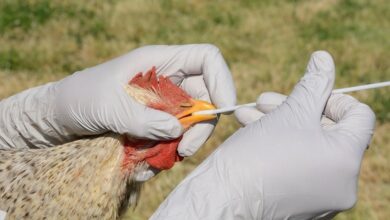One hundred years of vitamin D debate: do we really need to supplement our diet?
The so-called “sunshine vitamin” is obtained from exposure to ultraviolet B rays and from foods such as oily fish and, to a lesser extent, from eggs or mushrooms

Summer is here and many people can’t wait to start “taking vitamin D”, more fashionable than ever, although it is not a vitamin, nor a single substance, but rather a hormonal system that we nourish with the sun. During the last decade, research and social interest in its deficit have multiplied. “They have begun to ask for their blood levels without justification and, finding them low in many patients, the treatment and the request for the test are becoming routinely popular,” says Ricardo González, family doctor and director of the health center. San Fermin, in Madrid. “Many know it as ‘the sunshine vitamin,’ and ask to know its levels in tests done for other reasons,” he adds. “But then fewer people want to take supplements if they’re down. It should be requested only in those with risk factors, to replace it if they are low, “concludes this specialist.
On August 1 it will be a century since the American biochemist Elmer McCollum, co-discoverer together with the biochemist Marguerite Davis of vitamins A and B, described another “that favors calcium deposits” in the Journal of Biological Chemistry and that would end up questionably calling it vitamin D: vitamins are defined as essential compounds that we cannot synthesize, but our skin does produce this through the action of ultraviolet B rays on a cholesterol precursor.
Today we know that this system is essential for bone health and the metabolism of calcium and phosphates. Its deficiency is a global health problem caused above all by insufficient sun exposure —from which we obtain the necessary 90%—, which is estimated to affect more than a billion people, especially the elderly. In fact, it is spoken of as a pandemic. The remaining 10% is provided by blue fish such as tuna, salmon or mackerel and, to a lesser extent, eggs or mushrooms. Recent research has managed to increase its quantity in transgenic tomatoes.
“With the life we led centuries ago, we would have sufficient levels, but since we are not daytime, we are dressed and we do not exercise outdoors, with the diet it is almost impossible to meet the requirements,” says Esteban Jódar, endocrinologist at the University Hospital Quirónsalud Madrid and professor at the European University. To get enough sun without increasing the risk of premature skin aging or melanoma caused by solar radiation, Jódar recommends “15 minutes of exercise in the morning and 15 in the afternoon with bare arms and legs.” However, in Spain, located above the 35th parallel, skin synthesis is reduced in winter and spring, as ultraviolet radiation decreases. The diet could compensate if basic foods such as bread, milk and its derivatives were fortified, as is the case in the Nordic countries. As it is not, there is “the paradox that, despite having more sun, our levels are lower than theirs,” emphasizes Jódar.
When Carmen Madrigal, a neighborhood pediatrician at the Doctor Morante health center in Santander, asks for vitamin D levels in children, “they are usually fair.” “If they live in flats, in city centers, they will be sunbathing a little, especially in winter, because many also do extracurricular activities indoors,” she adds. She does not consider recommending, like some of her colleagues, not to apply sunscreen to children during the first 15 or 20 minutes of exposure because “it does not seem the most sensible”. “It is a subject in which I find it difficult to know if you are doing well or not,” she concludes.
As usual in biomedicine, about what we call vitamin D there are a handful of certainties, some consensus and many areas of debate among the experts themselves. José Manuel Quesada, retired endocrinologist and researcher at the Maimónides Institute for Biomedical Research of Córdoba (IMIBIC), has dedicated his life to this field. “What do we mean when we say vitamin D?” he poses. As this honorary professor at the University of Córdoba explains, this ambiguous name encompasses several compounds that form the endocrine system of vitamin D, similar to that of other steroid hormones: to begin with, two nutrients, cholecalciferol or vitamin D3 —which synthesizes our skin with the sun or is present in the aforementioned foods of animal origin—and ergocalciferol or D2, available in plants, yeasts and mushrooms. From them derive the prohormone called calcifediol (25 hydroxyvitamin D3) —the compound measured by the analytics— and calcitriol or active hormone, the last link in the system.
The levels that we understand as normal for calcifediol are established by consensus among experts. Although there are discrepancies, it is generally considered that blood levels should be maintained between 30 and 70 ng/ml. Levels below 20 ng/ml would indicate insufficiency and below 10 ng/ml, deficiency. Supplements should only be taken by those who have risk factors (institutionalized elderly, pregnancy and lactation, obesity, diabetes, osteoporosis, among others) and are below 30 ng/ml or, in a healthy population, if they are below 20 ng/ml , explains Jódar, who is part of the Mineral and Bone Metabolism Group of the Spanish Society of Endocrinology and Nutrition (SEEN). In studies conducted mostly in rich countries, 88% of the population has some deficiency and up to 7% a serious deficiency. According to the recommendations for the general population of the SEEN, in Spain, 80% and 100% of those over 65 years of age and 40% of those under that age have a level below 20 ng/ml.
Although mild deficiencies do not produce symptoms, a lack of vitamin D is associated with multiple pathologies, such as autoimmune disorders, infectious diseases, cardiovascular diseases, or diabetes. In the bones, it favors osteoporosis and, in extreme cases, produces a serious softening called rickets in children and osteomalacia in adults, both of which are exceptional in Spain. Why, if so many of us are deficient in vitamin D, is there not an epidemic of these diseases? From primary care, González considers that “the analytical deficit does not correspond to the clinic”, in which Madrigal agrees. “You no longer see rickets, which there was in my father’s time”, also a pediatrician and already retired, he emphasizes. In a review titled “Vitamin D Deficiency: Is There Really a Pandemic?”, published in 2016 in NEJM, several US specialists criticized that setting the minimum normal at 20 ng/ml includes many healthy people. Also that there are too many screening tests and that unnecessary supplements are given. According to the authors, a more appropriate cut-off point would be 12.5 ng/ml, a level that would encompass less than 6% of their compatriots.
In any case, the SEEN does not recommend measuring calcifediol in people without risk factors, nor systematic supplementation with pharmacological preparations in adults under 50 years of age to improve bone health. There is also no evidence for the use of supplements in order to obtain benefits against other pathologies. “There are very few quality studies in which vitamin D is given and these diseases are corrected, most have been designed in an erroneous way,” criticizes Jódar. Quesada agrees: “All the trials that have been done in these hundred years are poorly designed.” According to him, vitamin D is studied as if it were a medicine, not a nutrient, and the studies are done in people who have normal levels, in whom adding more cannot improve anything.
Indeed, research on vitamin supplements yields mixed results
In 1980, a publication in the International Journal of Epidemiology proposed that they could protect against colon cancer after finding that their mortality was higher in places with less natural light, such as large cities and rural areas at high latitudes. According to a recent review published in Nutrients, “many experimental studies in cultured cells and animal models have described a wide range of anticancer effects,” although “clinical trials have provided limited support for this hypothesis.” For example, one of them, published in NEJM, concluded in 2019 that the supplements did not reduce the incidence of invasive cancer or cardiovascular events. Other research published in The BMJ found a protective effect against acute respiratory infections, but especially in those with significant deficits. Quesada has studied its effect on coronavirus infections and defends that low levels of calcifediol are associated with a higher risk of infection, severity and mortality from covid-19, but institutions such as the US National Institutes of Health (NIH) or the British NICE assure that it is not justified in taking vitamin D alone to prevent or treat this infection. However, a recent systematic review in The Journal of Clinical Endocrinology and Metabolism concluded that they do reduce the risk of hip fracture, although “individuals at high risk, such as the elderly, institutionalized or those with low vitamin D , they can be the most benefited”. Given the uncertainty, Quesada insists that the Nordic example should be followed and basic foods supplemented with vitamin D for the entire population, in the same way that iodine is added to salt to ensure that the thyroid forms its hormones: “As you go demonstrating if having good levels of calcifediol prevents cancer, cardiovascular disease or falls, let’s take our population to adequate figures”.


